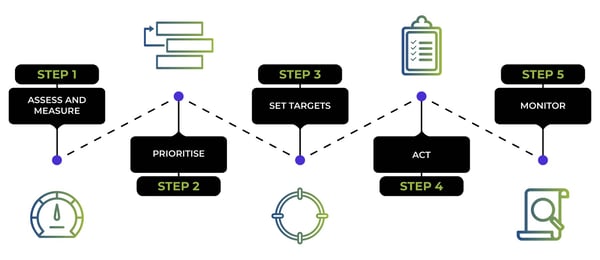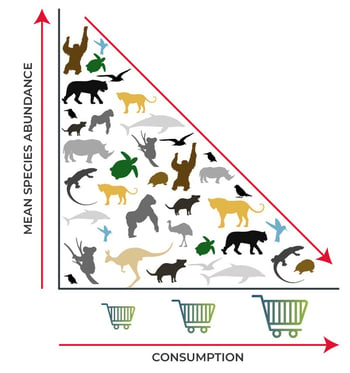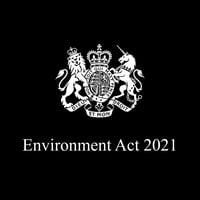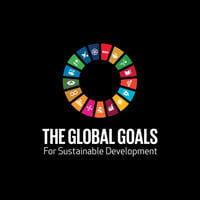SUPPLY CHAIN BIODIVERSITY FOOTPRINT
Through quantifying your company's supply chain biodiversity footprint, we empower you to make informed decisions and take responsible action towards preserving and enhancing the natural environment. Our assessment helps businesses adopt sustainable supply chain practices to reduce ecological impact and enhance biodiversity conservation.
WHAT VALUE DOES SCBF ASSESSMENT PROVIDE?
Beyond simple observation, our thorough Supply Chain Biodiversity Footprint Assessment (SCBF) explores the activities within your supply chain that affect biodiversity.
We evaluate the implications of sourcing raw materials, production processes, transportation, and other supply chain activities on biodiversity. Our SCBF assessment provides a clear picture of how much your business impacts the fragile balance of life on Earth, enabling you to manage and mitigate your supply chain footprint effectively.

WHAT WE WILL DO
We employ the innovative tool known as the Biodiversity Input-Output for Supply Chain & Operations Evaluation. We conduct a comprehensive analysis to quantify the biodiversity footprint of organisations supply chains by implementing the species.year metric. This assessment provides insight into which areas pose the greatest threat biodiversity.
Evaluate your supply chain, looking into all activities that impact biodiversity. The Supply Chain Biodiversity Footprint assessment provides deeper understanding on how supply chains impact biodiversity regarding factors such as land use changes, resource extraction, pollution, and habitat restoration initiatives, among many more important environmental factors.
STANDARDS AND METHODOLOGIES
The Supply Chain Biodiversity Footprint Assessment will help us see how economic activities affect biodiversity. It shows how a company can have a measurable impact on nature. Tunley adheres to the following standards and methodologies for SCBF. For the Global Reporting Initiative (GRI) Standards, we follow GRI 101 and GRI 304.
SCHEDULE A MEETING WITH A BIODIVERSITY SPECIALIST
Discuss your Biodiversity Footprint Plans today with a biodiversity specialist at Tunley.OPTIMA MAXIMISE THEIR ECOLOGICAL POTENTIAL
Optima worked with Tunley to assess and mitigate the significant risks within their supply chain footprint to maximise their ecological potential. We conducted a Supply Chain Biodiversity Footprint Assessment using the Biodiversity Input-Output method to quantify the biodiversity impacts from Optima's supply chain. The assessment identified four key biodiversity hotspots, highlighting opportunities for sustainable supply chain practices to be implemented. Watch the video to see the findings.
THE ASSESSMENT PROCESS
Our assessments align with Science Based Targets for Nature (SBTN) which enables companies to identify their impact on biodiversity in a quantifiable manner and take action to reduce their supply chain footprint.

BIODIVERSITY IS THE FOUNDATION OF THE GLOBAL ECONOMY
The World Economic Forum (WEF) estimates that over 50% of the world's GDP, equivalent to 44 trillion USD, significantly depends on nature and the services it provides.

KEY DRIVERS OF BIODIVERSITY LOSS
- 01 Habitat Loss
- 02 Climate Change
- 03 Over-Exploitation
- 04 Pollution
- 05 Invasive Species
HABITAT LOSS
Habitat loss, degradation, and fragmentation, driven by industrial activities and agriculture, are major drivers of the biodiversity crisis.
CLIMATE CHANGE
The alteration of global climate patterns due to human activities, primarily the emission of greenhouse gases, leads to rising temperatures, changing precipitation patterns, and sea-level rise.
OVER-EXPOLITATION
This involves the unsustainable use of resources such as overfishing, illegal hunting, and logging. It depletes populations and disrupts ecosystems, leading to the loss of species and their habitats.
POLLUTION
This includes air, water, and soil pollution caused by industrial activities, agricultural runoff, and waste disposal. Pollutants can directly harm species and their habitats, affecting their biodiversity.
INVASIVE SPECIES
Non-native species that are introduced to new environments can out-compete native species, disrupt ecosystems, and cause their decline or extinction.






